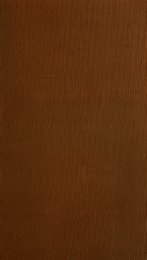Catalog of the Benthic Marine Algae of the ... - SeaweedAfrica
Catalog of the Benthic Marine Algae of the ... - SeaweedAfrica
Catalog of the Benthic Marine Algae of the ... - SeaweedAfrica
Create successful ePaper yourself
Turn your PDF publications into a flip-book with our unique Google optimized e-Paper software.
128 SMITHSONIAN CONTRIBUTIONS TO THE MARINE SCIENCES<br />
genus. Chromastrum was re-established by Stegenga and<br />
Mulder (1979) to include species with one axile, stellate,<br />
pyrenoid-bearing chloroplast in each cell and a life history<br />
involving an alternation <strong>of</strong> heteromorphic phases—<strong>the</strong> gametophyte<br />
with a unicellular base and <strong>the</strong> tetrasporophyte<br />
with a multicellular base that develops from a septately<br />
germinating carpospore. Acrochaetium was circumscribed to<br />
include species with one to several parietal pyrenoid-bearing<br />
chloroplasts in each cell and a life history involving an<br />
alternation <strong>of</strong> isomorphic phases. Audouinella was retained<br />
for species with one to several parietal chloroplasts <strong>of</strong> spiral<br />
or irregular shape, without pyrenoids.<br />
The nomenclature <strong>of</strong> acrochaetioid algae was muddled<br />
long ago by <strong>the</strong> selection <strong>of</strong> Acrochaetium daviesii (Dillwyn)<br />
Nageli (1862:405, 412), based on Conferva daviesii Dillwyn<br />
(1809 [1802-1809]:73, pi. F), as <strong>the</strong> lectotype <strong>of</strong> its genus<br />
by Drew (1928:147), who erroneously believed (along with<br />
all o<strong>the</strong>r authors) that <strong>the</strong> genus was first described by<br />
Nageli in 1862. In fact, it was described in 1858, and A.<br />
daviesii was not among <strong>the</strong> original species. Accordingly,<br />
Woelkerling (1983a:65) set aside <strong>the</strong> lectotype that, although<br />
untenable, had been accepted for more than a halfcentury,<br />
replacing it with A. secundatum (Lyngbye) Nageli<br />
(1858:532, footnote), based on Callithamnion daviesii (Dillwyn)<br />
Lyngbye var. secundatum Lyngbye (1819:129, pi. 41B:<br />
figs. 4-6). Although in both species each cell contains a<br />
single chloroplast with a pyrenoid, in A. daviesii <strong>the</strong> chloroplast<br />
is laminate and parietal, while in A. secundatum it is<br />
stellate and axile. Those schemes that are based on vegetative<br />
features, ei<strong>the</strong>r wholly or partly, are thus severely<br />
affected. Chromastrum falls into synonymy under Acrochaetium,<br />
while some name o<strong>the</strong>r than Acrochaetium must be<br />
applied to those species considered by many workers<br />
through many decades to be congeneric with A. daviesii.<br />
Stegenga (1985) applied Colaconema to <strong>the</strong> latter circumscription.<br />
The coining <strong>of</strong> numerous binomials as a consequence<br />
<strong>of</strong> changing <strong>the</strong> lectotype <strong>of</strong> Acrochaetium could be<br />
precluded by <strong>the</strong> conservation <strong>of</strong> that generic name using<br />
<strong>the</strong> 1862 publication as protologue and A. daviesii as type.<br />
Any proposal for conservation, however, should await fur<strong>the</strong>r<br />
clarification <strong>of</strong> <strong>the</strong> taxonomy <strong>of</strong> acrochaetioid algae.<br />
Because any classification <strong>of</strong> acrochaetioid algae used at<br />
present ei<strong>the</strong>r would be admittedly artificial (based on a<br />
single character) or, if allegedly natural (based on morphological,<br />
ontogenetic, and life history characters), would be<br />
criticized as being premature, I have employed a scheme<br />
that at least has <strong>the</strong> merit <strong>of</strong> not requiring new binomials,<br />
namely that <strong>of</strong> Feldmann (1962). According to this classification,<br />
all records <strong>of</strong> acrochaetioid algae for <strong>the</strong> Philippines<br />
are encompassed by Acrochaetium.<br />
Galaxauraceae as a Replacement for Chaetangiaceae<br />
When Chaetangium was established, Kutzing (1843b:392)<br />
misidentified his material with Fucus ornatus Linnaeus,<br />
which has turned out to be representative <strong>of</strong> Suhria in <strong>the</strong><br />
Gelidiaceae (see Papenfuss, 1952:173). For many decades<br />
<strong>the</strong> name Chaetangium has been applied on <strong>the</strong> basis <strong>of</strong><br />
Kiitzing's material, but a decision made at <strong>the</strong> International<br />
Botanical Congress at Sydney in 1981 makes it clear that<br />
<strong>the</strong> name must remain with Suhria unless conservation is<br />
invoked.<br />
Parkinson (1983), after reviewing <strong>the</strong> nomenclatural history<br />
<strong>of</strong> Chaetangium, decided against conservation <strong>of</strong> that<br />
generic name, choosing instead to propose Suhria for conservation<br />
against Chaetangium and to resurrect Nothogenia<br />
Montagne (1843a:302) as a replacement for Chaetangium.<br />
[Nothogenia variolosa (Montagne) Montagne, <strong>the</strong> type <strong>of</strong> its<br />
genus, was placed in <strong>the</strong> synonymy <strong>of</strong> Chaetangium fastigiatum<br />
(Bory de Saint-Vincent) J. Agardh by Kylin (in Kylin<br />
and Skottsberg, 1919:6)]. Because <strong>the</strong> name Chaetangiaceae<br />
must be considered a synonym <strong>of</strong> Gelidiaceae, Parkinson<br />
simultaneously established <strong>the</strong> family Galaxauraceae.<br />
Portieria as a Replacement for Chondrococcus<br />
The genus <strong>of</strong> Rhizophyllidaceae currently called Desmia<br />
Lyngbye (1819) emend. J. Agardh (1852 [1851-1863]) or<br />
Chondrococcus Kutzing (1847) has a troubled nomenclatural<br />
history. I have discussed it in detail previously (Silva,<br />
1952a:304-306), but it is necessary to return to it in light<br />
<strong>of</strong> changes in <strong>the</strong>, ICBN made at Sydney pertaining to <strong>the</strong><br />
typification <strong>of</strong> generic names.<br />
Desmia was established by Lyngbye (1819:XXIX, 33) to<br />
receive three species with narrow, compressed branches.<br />
One species is <strong>the</strong> type <strong>of</strong> Herbacea Stackhouse (1809) and<br />
ano<strong>the</strong>r is <strong>the</strong> type <strong>of</strong> Hippurina Stackhouse (1809). Both<br />
<strong>of</strong> <strong>the</strong>se genera are referable to Desmarestia Lamouroux<br />
(1813), but <strong>the</strong> name Desmarestia has been conserved against<br />
<strong>the</strong> Stackhouse names. Desmia is thus a superfluous name<br />
for Desmarestia and illegitimate in accordance with Article<br />
63.1 <strong>of</strong> <strong>the</strong> ICBN. Although Lyngbye did not give a reason<br />
for abandoning <strong>the</strong> name Desmarestia, which he cited in<br />
synonymy, he may have considered Desmia a better name<br />
because <strong>of</strong> its brevity or because it was descriptive (derived<br />
from <strong>the</strong> Greek word desmos, "band") ra<strong>the</strong>r than commemorative<br />
(Desmarestia being named for Anselm Gaetan Desmarest,<br />
a French zoologist). The sharing <strong>of</strong> <strong>the</strong> first four<br />
letters by <strong>the</strong> two names perhaps is not purely coincidental.<br />
The third species assigned by Lyngbye to Desmia was D.<br />
hornemannii ("hornemanni"), based on a specimen sent to<br />
him by Mertens under <strong>the</strong> name Fucus hornemanni. Mertens<br />
found this specimen among Forsskal's collections and indicated<br />
that it came from Helsing$r on <strong>the</strong>












